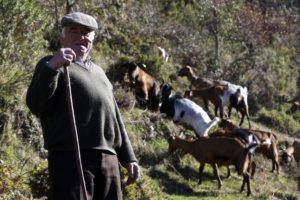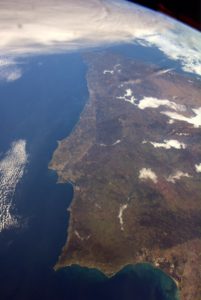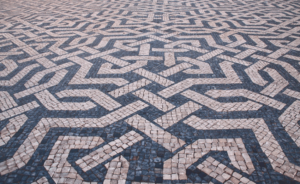‘My grandparents had five children, three boys, and two girls. They all looked different,’ says Ermelinda – my 64 years old neighbor – when I ask her what actually makes the Portuguese Portuguese.
‘João was the smallest with his 166 cm. Both his hair and eyes were dark brown. Manuel was just about 190 cm. He had black hair and very dark eyes. Ana was also tall, 180 cm but she was blond and had greenish eyes. Cecilia just looked like a Swedish girl, with her blazing blond hair and crystal blue eyes. António had beautiful hazel eyes, his hair was brown too. Now, would you please tell me, who looks the most Portuguese ?’
 The ‘typical’ Portuguese doesn’t exist in a country that has been occupied by a great number of civilizations – Phoenicians, Romans, Visigoths, Celts, Swabians, and Arabs.
The ‘typical’ Portuguese doesn’t exist in a country that has been occupied by a great number of civilizations – Phoenicians, Romans, Visigoths, Celts, Swabians, and Arabs.
On top of that, 400 years of slave trade has added black African genes to the population, something the white community here doesn’t like to be reminded off.
According to Manuel Sobrinho Simões – Head of the Pathology and Immunology Department of the University of Porto – Portuguese indeed have a remarkable mixture of genes. ‘If there is something typical of the Portuguese genome pole, then it’s the enormous diversity.’
The country is about twice as big as the Netherlands but has – with 10.3 million – much fewer inhabitants. In the last couple of years, urbanization has increased at the expense of the countryside and the coastal region has become more densely populated, younger and richer.
The two largest cities – Lisbon at the river Tagus and Porto at the river Douro – cover together only 5% of the territory, while 60% of the population and 50% of the industrial companies are located there.
 The national territory can – according to the Ministry of Environment – roughly be divided into:
The national territory can – according to the Ministry of Environment – roughly be divided into:
40% forest (pine trees, eucalyptus, cork oak)
30% farmland (agriculture and livestock)
20% urban area (towns, villages, railways, roads)
10% inland water (rivers, lakes, dams)
Over the past 22 years, farmland has decreased with 2000 km² while urbanization increased with 1000 km². During the same period, forestation increased with 2000 km² – an equivalent to about 250.000 football fields!
The bad news is, that this year already three-quarter of the increase has been destroyed by wildfires, including the tragic one in Pedrógão Grande, killing 64 people. And the nightmare hasn’t stopped yet!
(photos Público & Observador) Bom fim de semana
